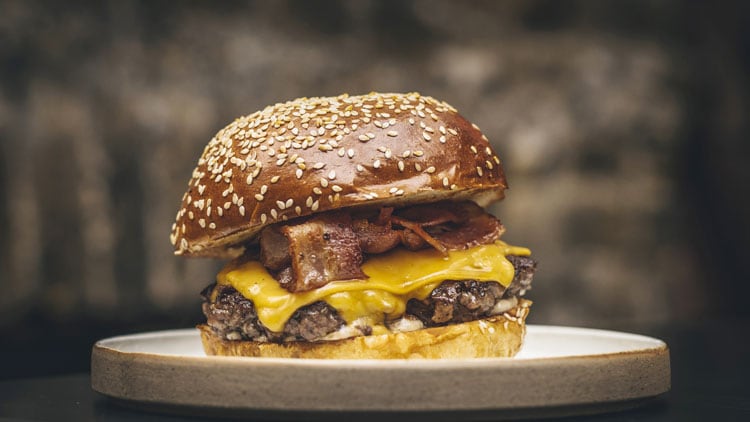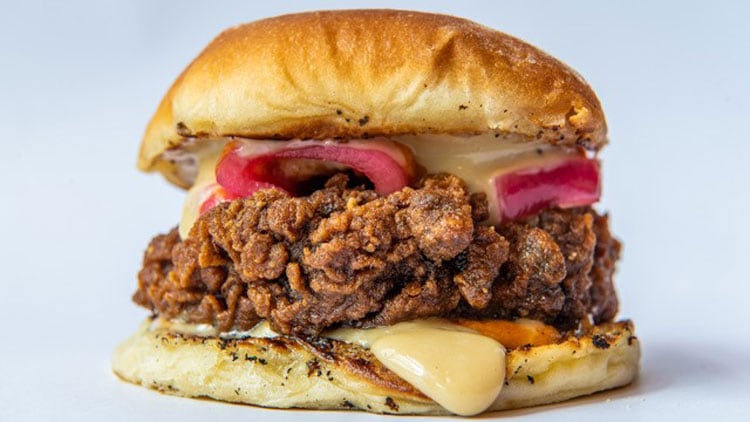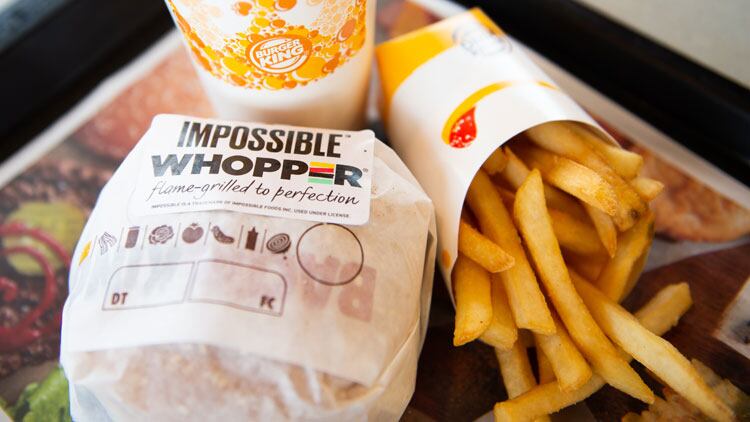High-end meat supplier Aubrey Allen has always done a roaring trade in burgers, but noticed a spike in customers getting specific about cut ratios and mince coarseness when restaurants and pubs went crazy for premium patties around 2012.
“We deal in whole animals so burgers have always been an important part of our overall mix as they tend to utilise the less glamorous cuts of meat,” says customer relations director Simon Smith. “We saw the boom coming and invested in equipment, including a fat analyser.”
In the intervening years a number of premium burger restaurants have successfully rolled out, but the shine has come off the sector over the past year or so. Byron, Gourmet Burger Kitchen and the northern-based Handmade Burger Co have shuttered sites and the majority of the smaller players have scaled back their expansion plans.
Intense competition in the space has triggered some panicked R&D, with some established players trying – not always successfully – to broaden their appeal with longer menus and novelty menu items.
Gourmet Burger Kitchen recently created an Indian-inspired Ruby Murray burger involving spiced lamb, mango chutney and poppadoms which was wholly overshadowed by a misguided advertising campaign that questioned the authenticity of UK Indian restaurants. The group was forced to pull the video campaign and issue an apology after some viewers labelled it racist.
Last year, Byron launched a duo of ‘flexitarian burgers’ made with 70% beef and 30% mushrooms which have since been quietly ditched following a less than stellar reception.
Being more accessible to customers trying to eat less meat or avoiding it altogether has been a key area of development for burger brands, with nearly all major groups now offering well-thought-out options for vegetarians and vegans.
“This is not just another disgusting tofu burger that only a dedicated hippie could convince himself to eat.” These are the words uttered by Eric Bohl of the Missouri Farm Bureau shortly after sampling Burger King’s new Vegan Whopper. The US meat industry lobbyist was unable to tell the difference between the fast food giant’s regular Whopper and its plant-based alternative, describing the wave of ‘bleeding’ meat-imitating burgers an “intense challenge to our industry”.
Anyone who thinks plant protein-based burgers aren’t going to be a major disruptive force in the burger market and in restaurants more generally needs to think again.
Set to launch across the US later this year, Burger King’s Vegan Whopper uses the Impossible Burger 2.0, which is similar to the original Impossible Burger but designed for fast food. Burger King is following in the footsteps of the mainly US-based The Cheesecake Factory, which started serving the original Impossible Burger last year. Gourmet Burger Kitchen and Byron – the UK’s two biggest burger restaurant brands – are late to the plant-based patty party with neither serving a meat-imitating burger (the former’s meat-free offering consists of bean burgers, falafel and a butternut squash quinoa patty, while the latter also goes down the bean burger and falafel route).
Honest Burgers recently became the first major UK restaurant group to serve a plant protein-based burger. Its Plant burger comes with a patty made by Beyond Meat with vegan smoked gouda, chipotle ‘mayo’, mustard red onions, pickles and lettuce.
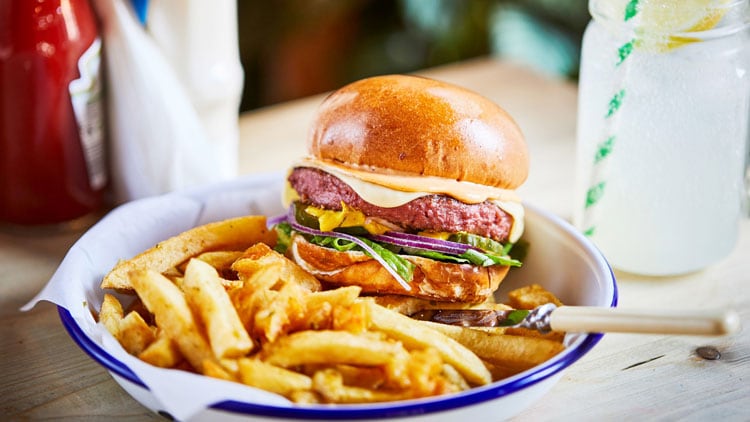
Note the pairing of the patty with strong flavours. “I checked out both the Impossible Burger and Beyond Meat when I was in LA last year. They’re good products. It looks like meat and it cooks like meat, it even feels a bit like meat. But it doesn’t taste like meat,” says MEATliquor co-founder and managing director Scott Collins.
“You’ll often see these products paired with strong flavours, and there’s a reason for that. There’s an element of The Emperor’s New Clothes about it all.”
Though he would not rule it out, Collins has no immediate plans to serve meat-imitating burgers at his 10-strong restaurant group. During his US research trip, he also found that, much like meat itself, the product requires careful handling in order to get the best from it, in terms of both dish development and execution.
“We went to half a dozen or so places and only one got it right,” he says. “It was a fully-vegan place called Crossroads Kitchen. They served it as simple diner-style burger.”
Getting the basics right
Most of the smaller players are continuing to concentrate on the basics, with a relatively tight selections of burgers. “Continuity is important. When it comes to burgers we don’t really do novelty,” says Collins. “We’ve gradually improved things, especially in terms of meat quality. There has been evolution but we haven’t ripped it all up and started again like some have.”
Collaborations are another way to add interest to burger menus. Recent link-ups include Patty & Bun and Kricket, which made different limited-edition dishes at their respective White City Television Centre restaurants. The former created a cumin-spiced lamb patty topped with goat’s cheese, mint raita, slow-cooked lamb raan, wild garlic and green chilli chutney; while the latter served the same preparations in slider-style pao breads. £1 from each dish went to Key4life, which works on rehabilitation programmes for young men in prison and those at risk of going to prison.
MEATliquor is an originator of the collaboration burger, and has worked with chefs including Fergus Henderson and José Pizarro. The group’s latest partnership with Pizarro resulted in an Ibérico pork patty mixed with Ibérico jamón and topped with aioli, shredded lettuce, grilled onion, cured manchego and Spanish paprika. The dish was available at all London MEATliquors and at José Pizarro Broadgate for £13.50, which included a bottle of Inedit Damm beer.
“Everyone’s doing collaborations these days. I’m not bitter, though, and they’re still good fun,” says Collins. “We worked with José to come up with ideas, then worked out how we’d actually get them into the restaurants. Our collaborations with London-centric chefs don’t make it to our regional sites as we don’t find they work that well outside the capital. But we do link-ups with local chefs at our Brighton and Leeds venues.”
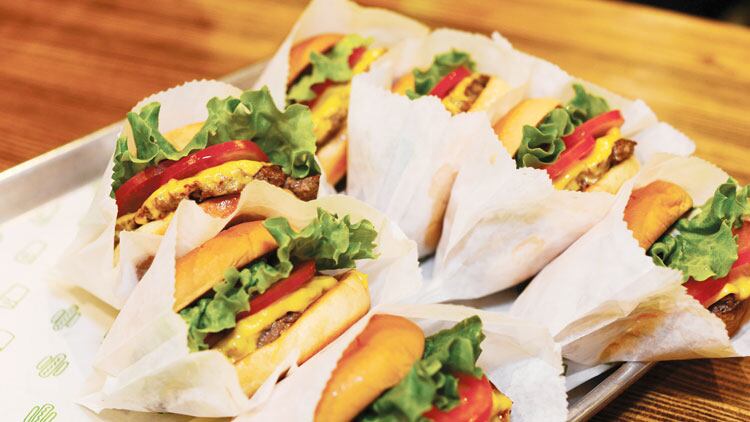
Patty power
While the bun and accoutrements are important, the patty itself is the most crucial element of a great burger. Smith advises restaurants to think carefully about the sort of burger they want to achieve.
“We look at what the bite is like, what the mouthfeel is like, and what is the fat content like,” he says. “People usually go around 20% but it depends how the burger is to be cooked. For flame-grilled you want a lower fat content to avoid the flare-ups from fat dripping down. For griddle-cooked burgers it can be higher.”
Meat company Danish Crown also believes that restaurants need to understand what sort of burger their customers look for. “You need to know what you want, from upmarket fast-food burgers, a restaurant-level steak burger or a dirty burger with all the trimmings. Each is made with different cuts, grinds and fat ratio,” says a spokesperson. “Restaurants usually go for a thicker burger with a larger grind as the cooking time is usually longer than fast food.”
Fewer and fewer groups are offering burgers Less Than Thoroughly Cooked (LTC). Those that do need to jump through many hoops, and said hoops often vary from council to council.
Suppliers selling burgers that can be cooked pink face even more stringent controls. Aubrey Allen is one of just a handful of suppliers with the necessary accreditations. “Every bit of the process is monitored. We have regular visits from the Food Standards Agency, we send off samples for swab testing…we even have webcams to monitor every aspect of production,” says Smith.
Honest Burgers is currently the only burger group in the country to make its own patties for LTC cooking, having established a fully-accredited butchery in late 2017.
Smashing it
Smashed burgers are growing in popularity, partly because they side-step the issue of LTC as they are almost always cooked right through. Brands that smash their burgers include MEATliquor, Five Guys, Shake Shack and Smashburger.
Patty & Bun founder Joe Grossman has just launched a smashed burger concept at Kensington street food and music venue Pergola. Smash Patty has a lower price point than Patty & Bun, with burgers priced from £6.50. The menu is tight with just four burgers on offer, all served in buttermilk and potato rolls made by London baker Bread Ahead. “We love smashed burgers. Shake Shack was a big inspiration, as was our butchers HG Walter sending us some outrageous hand-chopped Dexter mince, which works brilliantly smashed on the grill,” says Grossman. “The potato and buttermilk buns are unreal, too. Our entry burger is just bun, sauce and meat. There’s nowhere to hide.”
Poultry in motion
There’s lots going on in the chicken burger space too, as a host of newcomers try to take on the might of Nando’s and KFC. Established brands including Patty & Bun and Red Dog Saloon are also launching chicken spin-offs.
Chicken burgers are a core product at most fried chicken restaurants and most beef burger-specialists offer a chicken burger. While the market is far from straightforward – recent casualties include Clockjack and H.en – using chicken allows restaurants to offer burgers at a considerably lower price point, a big plus in a highly competitive market.
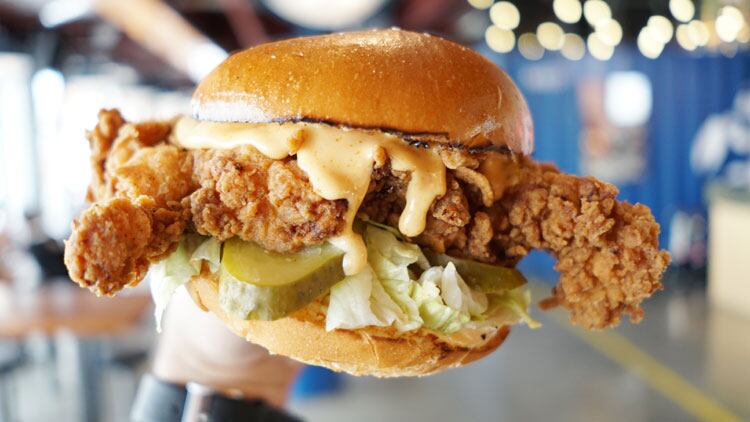
Thunderbird founder Matt Harris has broken the mould with his chicken burger by opting to use thigh over the (nearly) ubiquitous breast.
“The margin for error with chicken breast is so low – there’s a small gap between slightly underdone and dry and stringy. We do get some people who still think breast is best, but people are more educated about the best bit of the chicken these days,” he says.
Much like a certain bow tie-wearing colonel, Harris wants to keep his exact recipe close to his chest, but does reveal that it’s a three-step cooking process that sees coated thighs gently cooked in a pressure fryer, held in a steam oven and crisped up to order in a very hot open fryer.
Harris, who currently operates three Thunderbird restaurants, signs off with some advice that is applicable to all types of burgers.
“Avoid novelty. You can pile loads of crap into a burger. While that may be good for Instagram, it’s not good news for flavour. Things get lost and muddled. The inspiration for our Thunderbird bun is Chick-fil-A’s Original Chicken Sandwich, which is just fried chicken in a toasted buttered bun with pickles. We’ve added iceberg and a simple, mayonnaise-based sauce. But it’s still basic. Less is more when it comes to burgers.”
The Insider: Lucianne Allen, sales and marketing director at Aubrey Allen
The average size of a single breed herd in England is 28-50, yet to provide just eight fillets per week from one farm to a restaurant requires one farm to have 600 cattle. Curious?
There is more Aberdeen Angus beef sold in this country than is ever produced. Belted Galloway graces more menus than pastures. Gloucester Old Spot pork is lesser spotted than you would be led to believe.
Ten years ago the fashion for naming breeds and single farms really took off. The result? Producers and suppliers over-promising and chefs having unrealistic aspirations on what is actually achievable.
It is more than that: there is still a lack of understanding about how farming works and what are the best criteria for knowing you have the best beef.
Let’s take the first bold statement: there is more Aberdeen Angus sold in this country than is ever produced. We have all seen the assertion by national burger chains that all their beef burgers are Angus – how many of us also see the small print on the screen? Thirty years ago the numbers of the Aberdeen Angus Society in the UK were dwindling. As the markets were flooded with continental breeds, the Angus was out of favour. What did they do to increase their membership? They changed it from a pure breed society to one that would accept any beast sired by an Angus bull. The result? Angus crossed with dairy producing a dairy steer slaughtered at 14 months – a world apart from the original vision and far cry from the best beef you can have.
Back to the decade of fashion and the single breed. We heard time and again that an 80-cover restaurant, for example, was able to get pure breed from a single named farm for all its beef fillets. Let’s assume it only wants eight whole fillets of beef per week. It will need to source from one farm that can produce finished cattle at the rate of three per week for 50 weeks of the year. That’s 150 cattle per year. In order to produce that level of cattle, a farmer would need a herd of 600 cattle (if we agree that proper suckler beef cattle take between three and three and a half years from conception to finish).
The average herd size of a single breed cattle in England is 28-50 cows. Knowing that, consider how many single farm pure breeds appear on menus.
To learn more about the questions to ask to ensure you are getting the best beef, contact our sales team or visit us at our next chefs’ day.
This is a web version of an article that first appeared in the May issue of Restaurant magazine, the leading title for the UK's restaurant industry. For more features, comment, interviews and in-depth analysis of the restaurant sector subscribe to Restaurant magazine here.

